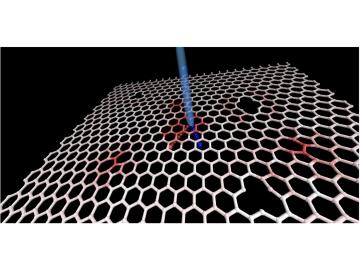Filter News
Area of Research
- (-) Materials (57)
- Advanced Manufacturing (8)
- Biological Systems (1)
- Biology and Environment (37)
- Building Technologies (1)
- Clean Energy (118)
- Climate and Environmental Systems (2)
- Computational Biology (1)
- Computational Engineering (2)
- Computer Science (4)
- Electricity and Smart Grid (1)
- Fossil Energy (1)
- Fusion and Fission (14)
- Fusion Energy (1)
- Isotopes (12)
- Materials for Computing (18)
- Mathematics (1)
- National Security (7)
- Neutron Science (31)
- Nuclear Science and Technology (8)
- Quantum information Science (3)
- Renewable Energy (2)
- Sensors and Controls (1)
- Supercomputing (43)
- Transportation Systems (2)
News Topics
- 3-D Printing/Advanced Manufacturing (3)
- Artificial Intelligence (1)
- Bioenergy (1)
- Biology (1)
- Chemical Sciences (2)
- Climate Change (1)
- Composites (1)
- Computer Science (2)
- Critical Materials (2)
- Cybersecurity (1)
- Energy Storage (1)
- Frontier (1)
- Fusion (1)
- Isotopes (1)
- ITER (1)
- Materials (7)
- Materials Science (5)
- Microscopy (5)
- Nanotechnology (6)
- Neutron Science (3)
- Physics (1)
- Polymers (1)
- Quantum Computing (1)
- Quantum Science (2)
- Space Exploration (1)
Media Contacts

Sergei Kalinin, a scientist and inventor at the Department of Energy’s Oak Ridge National Laboratory, has been elected a fellow of the Microscopy Society of America professional society.

At the Department of Energy’s Oak Ridge National Laboratory, scientists use artificial intelligence, or AI, to accelerate the discovery and development of materials for energy and information technologies.

Cynthia Jenks has been selected associate laboratory director for the Physical Sciences Directorate at the Department of Energy’s Oak Ridge National Laboratory. She joins the lab April 19.

On Feb. 18, the world will be watching as NASA’s Perseverance rover makes its final descent into Jezero Crater on the surface of Mars. Mars 2020 is the first NASA mission that uses plutonium-238 produced at the Department of Energy’s Oak Ridge National Laboratory.

The COHERENT particle physics experiment at the Department of Energy’s Oak Ridge National Laboratory has firmly established the existence of a new kind of neutrino interaction.



Researchers at the Department of Energy’s Oak Ridge National Laboratory have demonstrated that permanent magnets produced by additive manufacturing can outperform bonded magnets made using traditional techniques while conserving critical materials. Scientists fabric...






